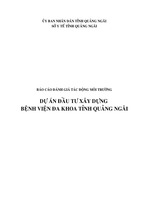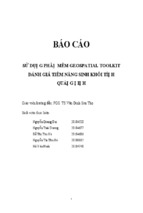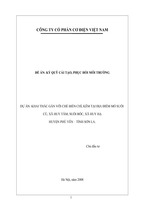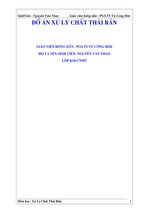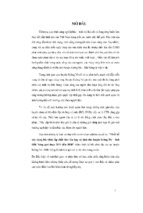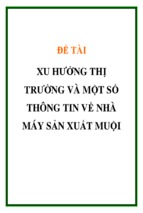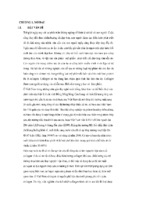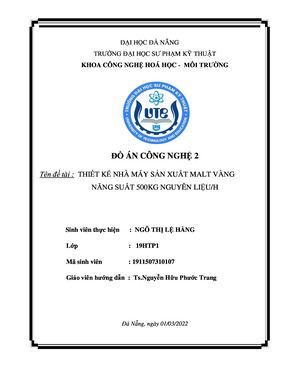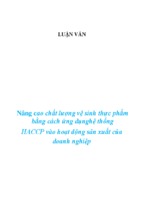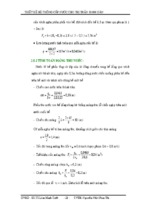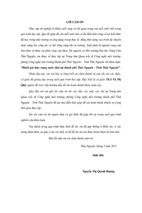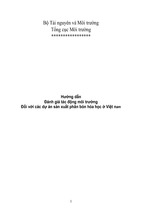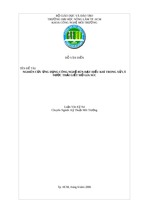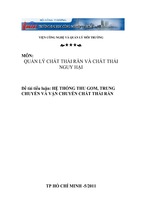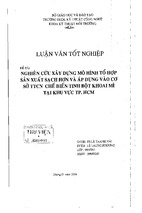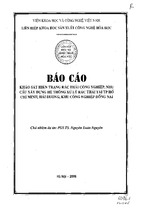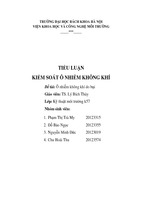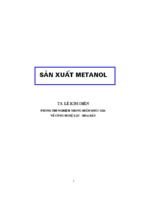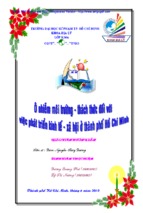LA4111 ch29 new Page 527 Wednesday, December 27, 2000 3:31 PM
CHAPTER
29
International Health Risk Assessment
Approaches for Pesticides
Colleen J. Dragula Johnson and Gary J. Burin
CONTENTS
I.
II.
III.
IV.
V.
VI.
VII.
Introduction.................................................................................................527
Sources of Information ...............................................................................528
Differences in Policy and Objectives .........................................................528
Performing Assessments.............................................................................531
Issues Affecting Risk Assessment Decisions .............................................534
Status of International Harmonization Efforts ...........................................533
Conclusion ..................................................................................................534
References...................................................................................................534
I. INTRODUCTION
The procedure for conducting risk assessments was originally developed by the
National Academy of Sciences in the early 1980s and contained four steps: hazard
identification, dose-response assessment, exposure assessment, and risk characterization. This same basic method continues to be used today as the basis for assessing
chemicals. Despite the general scientific consensus on the individual components of
a risk assessment, substantial differences exist in the numerical values calculated.
This chapter compares and contrasts the techniques used by various countries
for assessing the risks associated with pesticide substances. Particular emphasis is
placed on quantitating cancer risk, a contentious area within the scientific and
regulatory communities for many years. In addition, the impact of mechanism of
action (i.e., genotoxic and nongenotoxic) is emphasized, since this often drives the
assessment procedures used by countries.
527
© 2001 by CRC Press LLC
LA4111 ch29 new Page 528 Wednesday, December 27, 2000 3:31 PM
528
A PRACTICAL GUIDE TO ENVIRONMENTAL RISK ASSESSMENT REPORTS
In order to provide more consistency between countries on the methods used to
assess risk, a number of scientific meetings and conferences have discussed international harmonization efforts. To determine the status of this issue within the
international community, the International Programme on Chemical Safety (IPCS)
sponsored a project utilizing a survey questionnaire to obtain information on assessment techniques utilized by 21 Organisation for Economic Cooperation and Development (OECD) and select nonOECD countries. Several review articles and documents have also been prepared on this topic, especially in relation to carcinogenicity
(GAO, 1993; OTA, 1993; WHO, 1993).
Finally, this chapter addresses a number of policy and technical issues relating
to risk assessment. To the extent possible, updates on changes in policy have been
included. The primary goal is to highlight differences that currently exist between
the U.S. and other countries.
II. SOURCES OF INFORMATION
It is sometimes difficult to identify the appropriate governing body or group within
a regulatory agency to contact with questions concerning risk assessment procedures.
GAO (1993) provides a schematic breakdown of the regulatory agency structures in
select OECD countries. In addition, the Pesticide Regulation Compendium (PRC,
1993) comprehensively describes the pesticide regulations in over 100 countries,
including a description of each country’s regulatory system, data requirements for
residues, toxicology, ecotoxicology, and labeling. Table 1 lists the addresses for
select regulatory agencies involved in conducting risk assessments.
III. DIFFERENCES IN POLICY AND OBJECTIVES
To investigate the intercountry differences in approaches to risk assessment, two
components of the process have been examined: hazard identification and doseresponse. Hazard identification examines all available data in humans and laboratory
animals relating to a chemical’s potential to induce toxicity. For carcinogenicity, the
International Agency for Research on Cancer (IARC) uses an alphanumeric classification scheme to characterize whether the chemical is a known, probable, or
possible human carcinogen. Although the U.S. EPA formerly used an alphanumeric
system, in April 1996 it published new cancer risk assessment guidelines (U.S. EPA,
1996). These new guidelines proposed the use of three descriptive categories, similar
to those used in the European Union (EU)* to characterize cancer risk (Directive
67/548/EEC).** Although assignment of these qualitative cancer ratings tends to be
* The European Community (now called the European Union) was established in 1958 by the Treaty of
Rome and is responsible for developing governmental policy primarily through legislation known as
regulations and directives. Much of the legislation affecting environmental issues involves directives.
These directives are binding on the member nations with respect to the end result, but allow each state
to individually decide the means by which they will implement the directive (OTA, 1993). This allows
for considerable flexibility in fine-tuning the specifics of the directives.
** EU Directive 67/548/EEC addresses the classification, packaging, and labeling of dangerous substances and was last appended by the Seventh Amendment. Annex VI of this directive provides guidance
for characterizing the carcinogenicity of chemicals in the EU.
© 2001 by CRC Press LLC
LA4111 ch29 new Page 529 Wednesday, December 27, 2000 3:31 PM
INTERNATIONAL HEALTH RISK ASSESSMENT APPROACHES FOR PESTICIDES
Table 1
529
Regulatory Agencies Responsible for Conducting Pesticide Risk
Assessments
Australia
The Scientific Director Chemicals Safety Unit DHHLGCS, PO
Box 9848 Canberra ACT 2601
Bulgaria
National Center of Hygiene Ecology and Nutrition D. Nestorov
Str. 15 1431 Sofia, Bulgaria
Canada
Director General Food Directorate Health Protection Branch
Health and Welfare Canada Health Protection Branch
Bldg.,Tunney’s Pasture Ottawa, Ontario Canada K1A OL2
China
Institute for the Control of Agrochemicals, Ministry of Agriculture
(ICAMA) Liang Maqiao, Chaoyang Qu, Beijing 100026, China
Czechoslovakia
National Institute of Public Health, National Reference Centre for
Pesticides Srobarova 48, 100 42 Prana 10 Czech Republic
Egypt
Central Agricultural Pesticides Lab Ministry of Agriculture Dekki,
Giza, Egypt
France
DGCCRF Commission of Toxicity 59 Boulevard Vincent Auriol,
75703 Paris cedex 13
Germany
Bundesgesundheitsamt 1. Eachgebeit C I 4 2. Postfach 33 00
13 3. B-1000 Berlin 33 4
India
Secretary, Central Insecticides Board & Registration Committee
Directorate of P.P.Q & S NH-IV, Faridabad 121001
Korea
Agricultural Chemicals Research Institute 249 SeudoonDong
SuweonSi KyunggiDo Republic of Korea
Thailand
Director of Agricultural Regulatory Division Department of
Agriculture Bangkok 10900
United States
Office of Pesticide Programs, Health Effects Division
Environmental Protection Agency Washington, DC
fairly consistent between countries, the situation for the dose-response evaluation is
significantly different.
In the U.S., dose-response data are frequently assumed to be linear in the nonexperimental low-dose region and are assessed through the derivation of cancer
potency factors. Using mathematical models (i.e., the linearized multistage model,
see below), upper limits of risk are calculated that yield a cancer potency factor.
This factor is multiplied by the estimated exposure to yield a single risk value. In
actuality, the “true” risk actually lies between this calculated upper limit (i.e., 95th
percentile) and zero (EPA,1989).
The 15 EU member nations (Austria, Belgium, Denmark, Finland, France, Germany, Greece, Ireland, Italy, Luxembourg, The Netherlands, Portugal, Spain, Sweden, and the U.K.) use a significantly different approach than the U.S. for assessing
the dose-response of carcinogenic pesticides. In these countries, cancer is thought
to be a threshold response yielding a “safe” dose below which there is no risk. The
EU also focuses on mechanism of action (e.g., genotoxic vs. nongenotoxic) in
dealing with carcinogenic or potentially carcinogenic pesticides; registration of
pesticides which are genotoxic is not permitted. Acceptable daily intakes (ADIs) are
derived for nongenotoxic pesticides using NOELs or NOAELs* from animal carci* The NOAEL is the highest dose administered that produces “no statistically or biologically significant
increases in frequency or severity of adverse effects.’’ The NOEL is defined in the same manner, with
the exception that there is no increase in the frequency or severity of effects (Hallenbeck and Cunningham,
1985).
© 2001 by CRC Press LLC
LA4111 ch29 new Page 530 Wednesday, December 27, 2000 3:31 PM
530
A PRACTICAL GUIDE TO ENVIRONMENTAL RISK ASSESSMENT REPORTS
nogenicity studies. This approach has occasionally been applied in the U.S. to assess
pesticides for which the weight-of-evidence for carcinogenicity is not convincing.
Thus, the use of a threshold-based approach in the U.S. is a function of the weightof-evidence rather than whether or not genotoxicity is presumed to be responsible
for tumor induction. Given the release of the new cancer risk assessment guidelines,
however, the procedures used by the U.S. may change.
Health Canada reported employing different risk assessment techniques depending on the mechanism of tumor induction. For genotoxic pesticides, a quantitative
risk assessment is performed whereas for nongenotoxic pesticides an ADI is derived
in conjunction with a weight-of-evidence assessment (Dragula and Burin, 1994).
Specific information on the type of quantitative risk assessment model used was not
supplied. Typically, the federal government is responsible for these assessments, and
not the individual provinces within Canada. Publicly available information on pesticide regulatory practices can be obtained through “Backgrounders” published by
the Pesticides Directorate.
For occupational exposures, Denmark, The Netherlands, and the U.K. use quantitative risk assessment techniques (i.e., mathematical models) to generate a risk
value which represents the probability of human cancer risk. This probability reflects
the expected or the best estimate of the human cancer risk likely to occur in a
population.
Finally, a significant portion of countries simply adopt the carcinogenicity assessment policies or evaluations developed by other countries or scientific groups. For
example, Bulgaria and Thailand rely on the evaluations derived by MARC (which
provides statements regarding the weight-of-evidence for carcinogenicity based on
animal and epidemiological data); Korea relies on the risk assessment techniques
and decisions developed by the EPA; Egypt utilizes the evaluations provided by the
Joint FAO/WHO Meeting on Pesticide Residues; Czechoslovakia uses the risk
assessment methods developed by WHO in their Environmental Health Criteria
document (WHO, 1990); and Spain relies on criteria described in Annex VI of the
EU Directive 67/548/EEC for dangerous substances (Dragula and Burin, 1994).
The most outstanding difference between the risk assessment goals or objectives
in the U.S. vs. the EU is the default assumption in the U.S. that carcinogenicity is
a nonthreshold, or linear process where every increase in dose is associated with an
increased risk. The U.S. has utilized the linearized, multistage model for most
potential human carcinogens, including pesticides, whereas the EU has generally
used the ADI approach.
The U.S. also publishes extensive guidelines outlining the procedures for performing carcinogenic and other types of risk assessments. GAO (1993) referred to
this policy as “transparent” and noted that such detailed procedures were not yet
readily available in the EU and other OECD countries surveyed. However, the
specific guidance provided by the EPA may have the unintended effect of forcing
risk assessment decisions (i.e., through the application of default assumptions) in
ways not consistent with expert scientific judgement. The interviewees considered
the U.S. process to be less flexible than the procedures used in other OECD countries,
a fact they viewed as a weakness when compared to their system’s ability to flexibly
address specific issues on a case-by-case basis (GAO, 1993).
© 2001 by CRC Press LLC
LA4111 ch29 new Page 531 Wednesday, December 27, 2000 3:31 PM
INTERNATIONAL HEALTH RISK ASSESSMENT APPROACHES FOR PESTICIDES
531
IV. PERFORMING ASSESSMENTS
Two primary procedures exist for estimating the carcinogenic risks associated with
exposure to pesticides (and other substances): mathematical models and ADIs. In
general, quantitative risk assessment refers to the use of models since an actual risk
value is calculated. This method is much more complex than the ADI approach in
which the actual “risk” is presumed to be nonexistent. The ADI is derived from the
highest dose in an animal study at which no adverse effects occur and is compared
to the estimated human exposure.
The U.S. typically employs models using sophisticated computer software to
estimate cancer risk. The Netherlands is the only other country that regularly performs quantitative risk assessment utilizing such models, and it only uses these
models for occupational exposures, not for pesticide assessments. Quantitative
assessments using models are performed on a limited basis in Canada, Denmark,
Germany, and the U.K., but again not for pesticides.
In the U.S., the risk associated with carcinogenic substances is assessed using
the linearized, multistage model. This model has two main constraints. First, it
assumes no threshold for effects. In other words a single molecule of the pesticide/substance can induce the molecular events necessary to produce cancer (Barnes
and Dourson, 1988). As a result, zero risk is only achieved when zero exposure
occurs. Second, it assumes that the dose-response curve is linear in the low-dose
region. This means that an increase in dose results in a proportional incremental
increase in cancer risk. The decision to use this model was made in the 1970s and
was based upon uncertainty regarding the shape of the dose-response curve in the
nonexperimental, low-dose region. EPA believed that it was prudent to be conservative where the public was concerned and, thus, chose the linearized multistage
model in order to provide the greatest protection. This model remains the default
method for estimating the cancer risk of carcinogens. Alternative approaches may
be implemented when the draft cancer risk assessment guidelines are formally
adopted.
As noted above, most countries rely on ADIs for establishing exposure limits
for carcinogenic pesticides. These limits are not the same as risk values because
they represent levels at which no risk is predicted to occur. ADIs are calculated by
dividing the NOAEL or NOEL by Safety Factors (SF), also called uncertainty factors.
These factors reflect the reliability and consistency of the experimental animal data.
Generally, the more SFs applied the less confidence is placed in the data. The
majority of the nations polled in the IPCS survey (Australia, Belgium, Bulgaria,
Canada, China, Czechoslovakia, Denmark, France, Germany, India, Japan, Korea,
The Netherlands, Spain, and the U.S.) routinely utilized the NOAEL/SF approach
for estimating the risks associated with pesticide exposure (Dragula and Burin,
1994). As previously noted, the U.S. often uses quantitative models for estimating
cancer risks.
The reliance on the NOAEL/SF approach is easy to understand: it is simple to
use and provides a clear, limit value below which exposures are considered acceptable. Although many countries currently rely on this approach for assessing cancer
risks there are practical advantages to the risks calculated from quantitative models.
© 2001 by CRC Press LLC
LA4111 ch29 new Page 532 Wednesday, December 27, 2000 3:31 PM
532
A PRACTICAL GUIDE TO ENVIRONMENTAL RISK ASSESSMENT REPORTS
These include the ability to calculate “cost” per tumor in risk benefit comparisons
and to develop “bright lines” or clear risk values upon which regulatory decisions
can be based (e.g., a cancer risk of 1 in 1 million).
V. ISSUES AFFECTING RISK ASSESSMENT DECISIONS
The mechanism by which substances induce cancer (e.g., genotoxic vs. nongenotoxic) is the single most important factor affecting the approach many countries take
to assessing human cancer risk.* Terms used to describe the mechanism of nongenotoxic and genotoxic substances are threshold and nonthreshold, respectively.
There appears to be general international consensus that most biologic effects occur
through a threshold mechanism (i.e., there is a dose, which is unique for each
substance and endpoint, below which no adverse effect or response is observed);
however, there is some debate about whether this is also true for carcinogenicity.
According to U.S. policy, cancer can develop from a single event with no
threshold. Yet, several nongenotoxic mechanisms of action have been identified and
studied extensively. These include thyroid tumors induced by hormone imbalance
and kidney tumors associated with α−2µ globulin.
Two other issues affect the conduct of risk assessments and represent substantial
differences in international scientific opinion: the significance of tumors arising at
the maximum tolerated dose (MTD); and the significance of mouse liver tumors
(MLTs) in extrapolating carcinogenic risk to humans. Not only do these issues
symbolize a significant divergence of opinion and policy between the U.S. and other
countries, they also represent barriers between countries with respect to data interpretation in carcinogenicity studies.
Most countries believe that tumors only occurring above the MTD result from
physiologic changes that cannot be directly associated with the substance administered. Such changes include, but are not limited to, cell death and concomitant
cellular repair processes, metabolic overload, pharmacokinetic alterations, and hormonal changes. Australia, France, Bulgaria, and Canada specifically concluded that
tumor data collected at the MTD were either of limited or no usefulness for assessing
carcinogenic risks in humans (Dragula and Burin, 1994).
In comparison, the 1986 EPA cancer risk assessment guidelines state that data
must be collected at the MTD in order to provide adequate statistical power for
assessing the carcinogenicity of a substance (U.S. EPA, l986). An agency position
document stated that the purpose of the MTD was to “vigorously” test a substance
“for oncogenic potential at levels somewhat below test levels which might compromise survivability” (Farber, 1987). Interestingly, EPA did not specifically use the
term “MTD” in the proposed new cancer risk assessment guidelines, but it did state
that the high dose in a carcinogenicity bioassay should produce some toxicity (not
* Genotoxic compounds directly interact with DNA and alter it permanently such that the change is
passed on to future generations of cells. This is referred to as a heritable change and the substances that
produce this effect are often termed “initiators” to describe the initiation of cancer. In comparison, nongenotoxic substances simply enhance or promote the growth of cells already genetically altered or
initiated; they do not interact directly with the DNA to produce any alterations. These substances are
referred to as “promoters.”
© 2001 by CRC Press LLC
LA4111 ch29 new Page 533 Wednesday, December 27, 2000 3:31 PM
INTERNATIONAL HEALTH RISK ASSESSMENT APPROACHES FOR PESTICIDES
533
to exceed a 10% reduction in body weight gain during the lifespan of the animal)
without unduly affecting the survival or the nutrition and health of the test species
(U.S. EPA, 1996).
Of the 16 countries responding to related questions in the IPCS survey, eight
(Bulgaria, Denmark, Germany, India, Japan, The Netherlands, Spain, and the U.S.)
stated that dose selection “frequently” affected carcinogenicity study results and
another two (Belgium and China) stated that it “sometimes” affected study results
(Dragula and Burin, 1994). Furthermore, seven of the countries concluded that the
highest dose used was too high (Belgium, Bulgaria, Czechoslovakia, Denmark,
Germany, Japan, and Spain) and five felt that it was inadequately justified (Canada,
France, Germany, India, and the U.S.). These survey results point to the need for
international consensus on the highest dose to be used in animal carcinogenicity
studies and clarification as to whether this dose should be the MTD. Clearly, many
countries disagree with the U.S. criteria for determining whether dosing is adequate.
The U.S. has also developed a policy/regulatory position on the significance of
MLTs for estimating carcinogenic risk to humans. EPA (1986) indicated that MLTs,
under particular conditions, provide sufficient evidence of carcinogenicity in animals, even if they are the only type of tumor response observed. This “sufficient”
classification may be withdrawn under particular conditions but the policy is in direct
conflict with the opinions and policies of other countries (Dragula and Burin, 1994).
In India, for example, MLTs typically receive little “weight” as indicators of carcinogenic potential in humans. Bulgaria also assumes that these tumors are of little
relevance in estimating human cancer risks. In Germany, the significance of MLT
data is assessed on a case-by-case basis. Because MLTs are a frequent finding in
carcinogenicity studies, the different views on their significance represent a barrier
to risk assessment harmonization.
VI. STATUS OF INTERNATIONAL HARMONIZATION EFFORTS
Significant interest in harmonizing risk assessment techniques has culminated in a
number of international scientific conferences as well as national and international
sponsorship of data gathering activities on the subject. At present, scientists are
attempting to determine the status of risk assessment procedures in different nations
and have discovered that some countries have had the opportunity to focus efforts
on it far more than others. This information represents a first step towards identifying
the areas most likely to benefit from harmonization efforts.
In the IPCS survey, 17 of the 18 nations clearly indicated that they were interested
in harmonizing risk assessment procedures (Dragula and Burin, 1994). However,
the area(s) that each country identified as being most in need of harmonization
activities varied considerably and included virtually every topic related to toxicology.
This diversity of responses truly reflects the varying interests of the countries polled.
Involvement in international harmonization endeavors is not limited to pesticide
chemicals. In fact, the pharmaceutical industry has recently worked to harmonize
various topics of concern. Several consensus documents have been published under
the sponsorship of the International Congress on Harmonization. It would appear
© 2001 by CRC Press LLC
LA4111 ch29 new Page 534 Wednesday, December 27, 2000 3:31 PM
534
A PRACTICAL GUIDE TO ENVIRONMENTAL RISK ASSESSMENT REPORTS
that some of the lessons learned by pharmaceutical manufacturers may also be
applied to pesticide manufacturers.
VII. CONCLUSION
The four-step paradigm originally proposed in 1983 by the National Academy of
Sciences continues to be the most widely used methodology for presenting the results
of risk assessments. However, as this chapter shows, significant differences exist
with respect to individual country’s policies for interpreting toxicity data and assessing carcinogenic risk. These differences are particularly interesting given the fact
that toxicity data requirements for pesticide registration are fairly standardized across
most countries (GAO, 1993 and PRC, 1993). They appear to arise largely in the
area of data interpretation reflecting each country’s autonomy in regulatory decisionmaking. This desire for individuality complicates efforts to enter international markets, since a pesticide developed in one country and regarded as noncarcinogenic
may be considered carcinogenic in another country. Johnson (1989) captured this
reality succinctly when stating that although significant agreement exists with respect
to the scientific principles for regulating pesticides, the application of these principles
is based on various factors, not the least of which are “national, social, and institutional structures and values.”
To date, the U.S. has taken the international lead in developing risk assessment
methodologies. More countries are becoming involved in developing approaches to
risk assessment, such as The Netherlands. International scientific bodies, such as
WHO, IARC, IPCS, OECD, and the Pan American Health Organization, are also
playing an increasingly important role in advancing this process, especially for
developing countries (OTA, 1993).
In conclusion, the following two general statements can be made regarding the
current state of risk assessment and its future direction. First, the status quo results
in an unnecessary duplication of resources and the generation of potential trade
barriers. Second, harmonization efforts are underway to establish a uniform approach
to data interpretation, especially for carcinogenicity data, in risk assessments. It is
clear that international harmonization of risk assessment procedures is an objective
which will result in more consistent international risk decisions.
REFERENCES
Anon., Pesticide Regulation Compendium, 4th ed., Editions Agrochimie, Switzerland, 1993.
Barnes, D.G. and Dourson, M., Reference dose (RfD): description and use in health risk
assessments, Regul. Toxicol. Pharmacol., 8, 471, 1988.
Dragula, C. and Burin, G., International harmonization for the risk assessment of pesticides:
results of an IPCS survey, Regul. Toxicol. Pharmacol., 20, 337, 1994.
Farber, T.M., A Position Document of the U.S. Environmental Protection Agency Office of
Pesticide Programs: Selection of a Maximum Tolerated Dose (MTD) in Oncogenicity
Studies, Office of Pesticide Programs, Washington, 1987.
© 2001 by CRC Press LLC
LA4111 ch29 new Page 535 Wednesday, December 27, 2000 3:31 PM
INTERNATIONAL HEALTH RISK ASSESSMENT APPROACHES FOR PESTICIDES
535
Government Accounting Office, Pesticides: A Comparative Study of Industrialized Nations’
Regulatory Systems, Report to the Chairman of the Committee on Agriculture, Nutrition,
and Forestry, U.S. Senate, Washington, 1993.
Hallenbeck, W.H. and Cunningham, K.M., Qualitative evaluation of human and animal studies, in Quantitative Risk Assessment for Environmental and Occupational Health, Lewis
Publishers, Ann Arbor, MI, 4041, 1988.
Johnson, E.L., Pesticide residues, In International Food Regulation Handbook: Policy, Science, Law, Middlekauff, R.D., and Shubik, P., Eds., 253, 1989.
Office of Technology Assessment, Appendix A: International risk assessment, in Researching
Health Risks, U.S. Government Printing Office, Washington, 187, 1993.
U.S. Environmental Protection Agency, Guidelines for Carcinogen Risk Assessment, Federal
Register, 51, 33992, 1986.
U.S. Environmental Protection Agency, Proposed Guidelines for Carcinogen Risk Assessment,
Federal Register, 61(79), 17959, 1996.
U.S. Environmental Protection Agency, Risk Assessment Guidance for Superfund,Vol. I:
Human Health Evaluation Manual (Part A), Interim Final, Office of Emergency and
Remedial Response, Washington, 1989.
World Health Organization, Classification Systems on Carcinogens in OECD Countries —
Similarities and Differences, prepared by Norway and The Netherlands, 1993.
World Health Organization, Environmental Health Criteria, Principles for the Toxicological
Assessment of Pesticide Residues in Food, Vol. 104, International Programme on Chemical Safety, Geneva, Switzerland, 1990.
© 2001 by CRC Press LLC
- Xem thêm -

